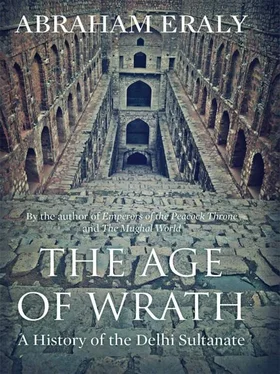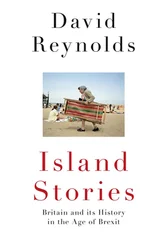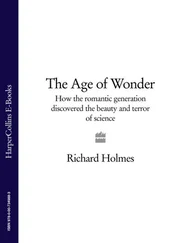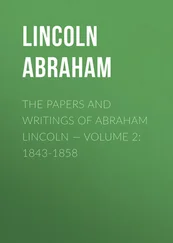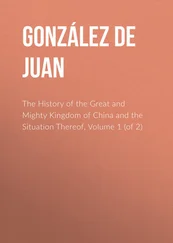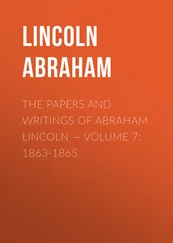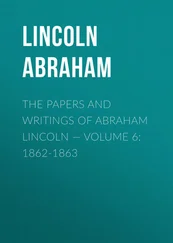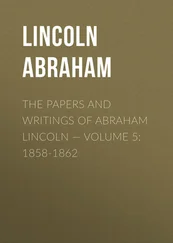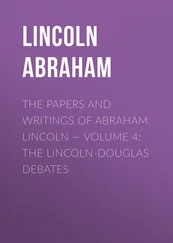SUCH CREATIVE INTERACTIONS between Hindu and Muslim cultures were, however, rare, because of their totally contrary nature. This was particularly evident in the architecture of temples and mosques. While the structure of the Hindu temple was complex, dark and mysterious, the structure of the mosque was bright and open, its lines smooth, simple and elegant. Their very construction methods were different — while arch and dome were the defining characteristics of Muslim architecture, India had no tradition of dome building, and arches were built in India by the method of corbelled horizontal courses, unlike the superior Muslim practice of building them with voussoirs.
Similarly, while Muslims abhorred the depiction of living beings in art as sinful imitations of god’s work, Hindu art was primarily figurative, in painting as well as in sculpture. Mosques were entirely free of figurative art, and used only floral, calligraphic, arabesque and geometric designs for decoration, but Hindu temples generally teemed with the sculptures and paintings of people, gods, animals and mythological creatures. Furthermore, Hindu temple art often depicted men and women in erotic play, which Muslims considered as totally repugnant.
The only cultural field in which Hindu and Muslim traditions exerted any notable mutual influence was in music. In early medieval times Indian classical music split into two distinct streams, Carnatic music of South India, and Hindustani music of North India, because North Indian music at this time came under the influence of Perso-Arabic musical tradition, while South Indian music remained virtually unaffected by it. Further, Hindustani music at this time became primarily court music (because its main patrons now, consequent of the collapse of the Hindu political power in North India, were sultans and Muslim nobles) while Carnatic music (flourishing mainly in peninsular India, in regions outside Muslim rule) largely retained its old character as devotional music. Besides, Carnatic music remained primarily vocal music, as most of its compositions were written to be sung; in contrast, musical instruments came to play a much larger role in Hindustani music, and it used far more instruments than Carnatic music.
THE TURKISH INVASION of India and the establishment of Islam as the religion of the dominant ruling class in India dramatically changed the religious ethos of the subcontinent. Over the millennia Hinduism had absorbed into it the beliefs and practices of numerous Indian tribes as well as of many foreign migrants. Hinduism could possibly have accommodated Islam too into its capacious multi-sectarian fold, but Islam was not susceptible to such absorption, for its monotheism was totally incompatible with Hindu polytheism. ‘They (Hindus) totally differ from us in religion, as we believe in nothing in which they believe, and vice versa,’ comments Al-Biruni. Because of this total contrariness between Hinduism and Islam they did not even exert any notable influence on each other.
This however was true only of the orthodox sects of both religions. In contrast to this, there were some intensely devotional new movements in both religions at this time, and there was a fair amount of interaction between these various movements. In Hinduism, the most notable of the devotional movements were the Bhakti cults that came to prominence in the centuries immediately preceding the Turkish invasion of India. These supercharged devotional cults originated in South India around the sixth century, and, gradually, over the next few centuries, spread all over the subcontinent.
The Bhakti sages held that only total and unswerving bhakti (devotion to god) could save man from the pitfalls of life and earn him salvation. And for this one did not have to go to temples or perform rituals, for god is latent in every man, and this god within can be roused through loving devotion. This was also the view of Sufis in Islam. They held that god realisation cannot be achieved through conventional religious practices, but only though obsessive, passionate devotion to god, and by awakening one’s intuitive faculties through intense meditation. Such meditation, Sufis believed, would enable the devotee to gain insights into the true nature of god, and that this knowledge would liberate him from all worldly bonds, so that he becomes one with god.
Another fascinating religious development in the middle ages was the rise to prominence of several mystical religious movements in India, in both Hinduism and Islam. The mystics disregarded conventional religious barriers and drew their followers from both Hinduism and Islam, and they had no hesitation to freely incorporate elements of different faiths in their teachings. ‘There is only one god, though Hindus and Muslims call him by different names,’ stated Haridasa. And Kabir asserted:
All that lives and dies,
They are all one.
The this and that haggling
is done.
The Hindu Shahi dynasty is now extinct, and of the whole house there is no longer the slightest remnant in existence. We must say that, in all their grandeur, they never slackened in their ardent desire for doing that which is good and right, that they were men of noble sentiment and noble bearing.
— Al-Biruni
The Arab imperial expansion is one of the most dazzling military sagas in world history, a tornado of awesome kinetic energy and speed that swept through a vast stretch of land from the frontiers of China to the shores of the Atlantic Ocean, covering Central Asia, Afghanistan, the Middle East, North Africa, as well as Spain and southern France, an area more extensive than the Roman empire at its height. And all this was achieved within the span of just a century after the death of Prophet Muhammad, the founder of Islam, in CE 632. Arabs believed that they had the power of god with them and were therefore invincible. And indeed they did prove to be invincible.
Inexplicably it was only in the last phase of this imperial expansion, in the second decade of the eighth century, that Arabs made their first major military move into India, although India was at this time famed for its riches, and Arab chieftains had been for over half a century right at the border of India, in Afghanistan, and India was a familiar country for them, for they, as seafaring traders, had a many-centuries-long commercial relationship with Indians.
The history of the commercial relationship between India and Arabia goes back to ancient times, and this amicable relationship continued even after Arabs, galvanised by Islam, turned their primary interest from trade to empire-building. Arab traders had many settlements in India in early medieval times, at port cities and royal capitals, where Indian kings in their characteristic tolerant religious spirit had allowed them to build their homes and mosques, practice their religion without any restriction, and maintain their distinctive lifestyle. Some Indian kings even employed Arabs in top administrative and military positions, and some had Arab contingents in their armies.
There was however an irritant in the Indo-Arab relationship, the menace of pirates operating out of Indian harbours, which hampered Arab shipping and trade. This prompted Arab rulers to send a couple of naval expeditions into Indian coastal waters, to chastise the pirates. But these were minor incidents. And their purpose was to secure the sea trade, not to conquer territory. It was in any case impossible to conquer land from the sea in that age.
There is only one recorded instance of a caliph even considering sending an exploratory contingent into India. This was by Caliph Usman of the mid-seventh century, who at one time thought of sending an army into Sind. But he was, according to the ninth-century Persian historian Al-Biladuri, advised against it by an explorer. ‘Water is scarce there, the fruits are poor, and the robbers are bold,’ the explorer warned. ‘If few troops are sent there, they will be slain; if many, they will starve.’
Читать дальше
